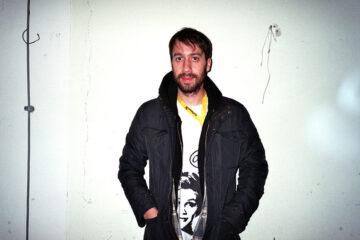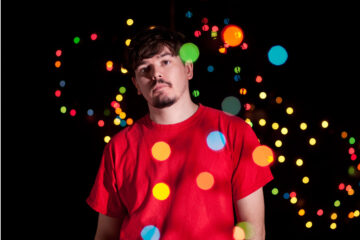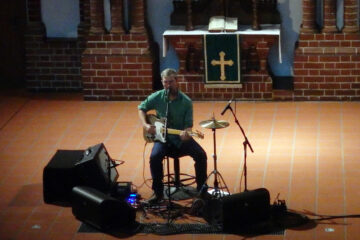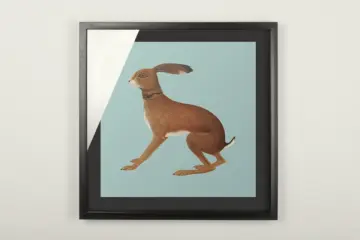Let a dead man stay dead. That’s the meaning of »Deixem O Morto Morrer,« the title of the second single from Caiano’s debut album, »Vou Ficar Neste Quadrado,« just released on the Glitterbeat label. The video for it looks like a feminist manifesto, but it’s not: »Actually, the song is about letting go of things that are over,« she tells us on the sidelines of a festival performance in Marseille.
It’s not the first time the Portuguese singer, born in 1999, has been confronted with this. »You know, we have a big problem with domestic violence in Portugal—and probably elsewhere as well. I sing about the problems I face as a woman in our society. The video brought out a connotation that wasn’t originally intended, but I like it. My songs are never meant to be understood one-dimensionally.«
When it comes to the complex pop sound of the debut album, you wouldn’t get the idea that anything here is one-dimensional. It contains skilfully layered tracks that shift against each other and then merge: It contains syncopated drum tracks from various sources, often doubled, then there are the growling synth basses as well as this fascinating voice that has an unparalleled urgency. If you examine the origins of these different layers, you’ll make some exciting discoveries.
(Don’t) call it Folktronica
Caiano started piano lessons at the age of six, intensified them at eleven, learned jazz at the »Hot Club« and studied music after school. Before, but especially during her studies, her voice crystallised into her main instrument. In addition to jazz, she grew up with Portuguese folk music. There are the folk songs that are still sung in rural areas and that invite you to dance with their characteristic percussion instruments—which Caiano also uses on her album. But there are also albums by revolutionaries like Zeca Afonso. This was a group of folk musicians who rebelled against the dictatorship of the despot António Salazar in the sixties and provided the soundtrack for the Carnation Revolution. These original, anachronistic sounds can be clearly rediscovered in her songs.
»I don’t mind the maligned term ‹world music›. If it highlights traditional elements in music from all over the world, then I feel represented by it.«
Ana Lua Caiano
At the same time, she strongly believes that it was the songs of Björk, Portishead and Laurie Anderson that influenced her own pop style. The synthesis of the old, the traditional and the avant-garde of trip-hop and 1990s experimental pop is mainly expressed through her music as a synthetic hybrid. It’s not surprising that the term »folktronica« is increasingly used in this context—not only for Caiano, but also for similar pop designs from Ukraine or the Baltic states. This doesn’t bother her though: »I don’t mind the maligned term ‹world music›. If it highlights traditional elements in music from all over the world, then I feel represented by it.«
But she’s not stuck in the past either: In addition to the aforementioned references, she also cites the Kuduro sound of the group Buraka Som Sistema as formative. »It’s important to preserve traditional culture.« But it can also be renewed and lifted into the 21st century, as she proves. Then it becomes very entertaining, interesting and danceable.










